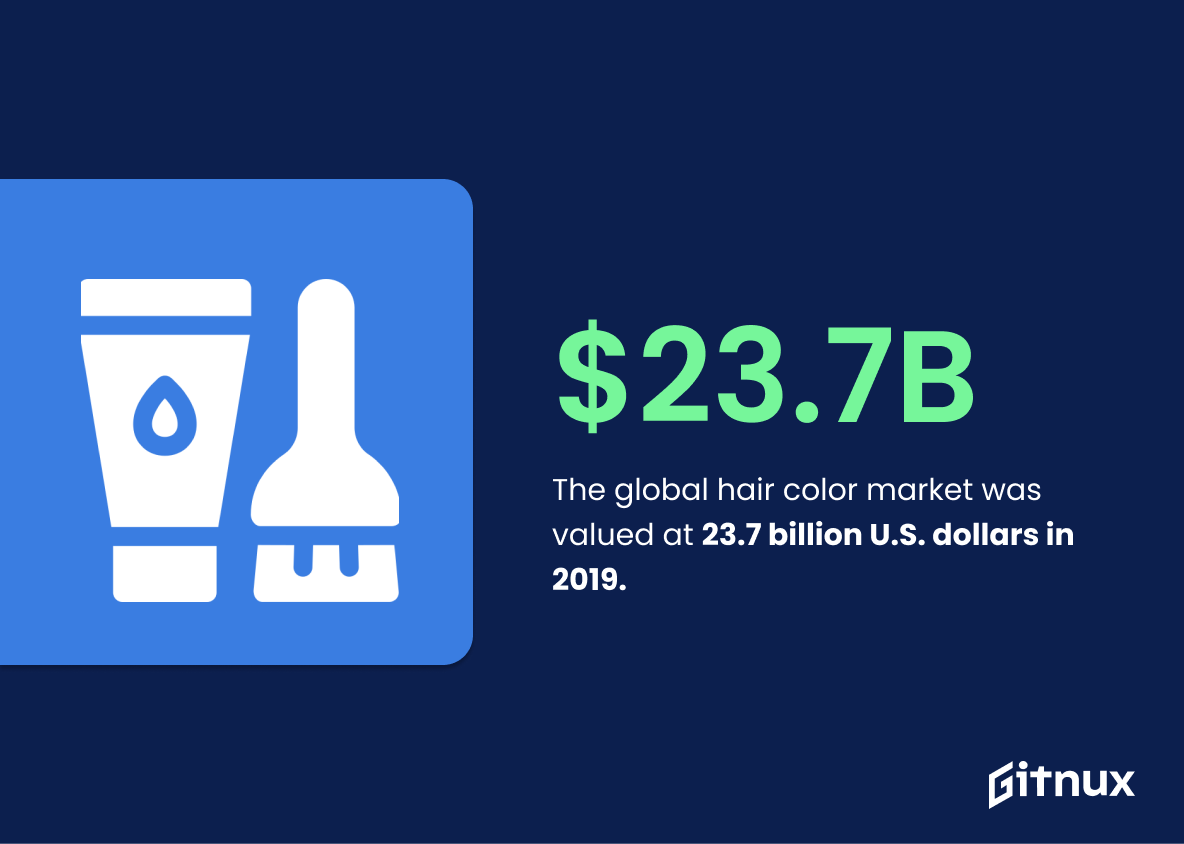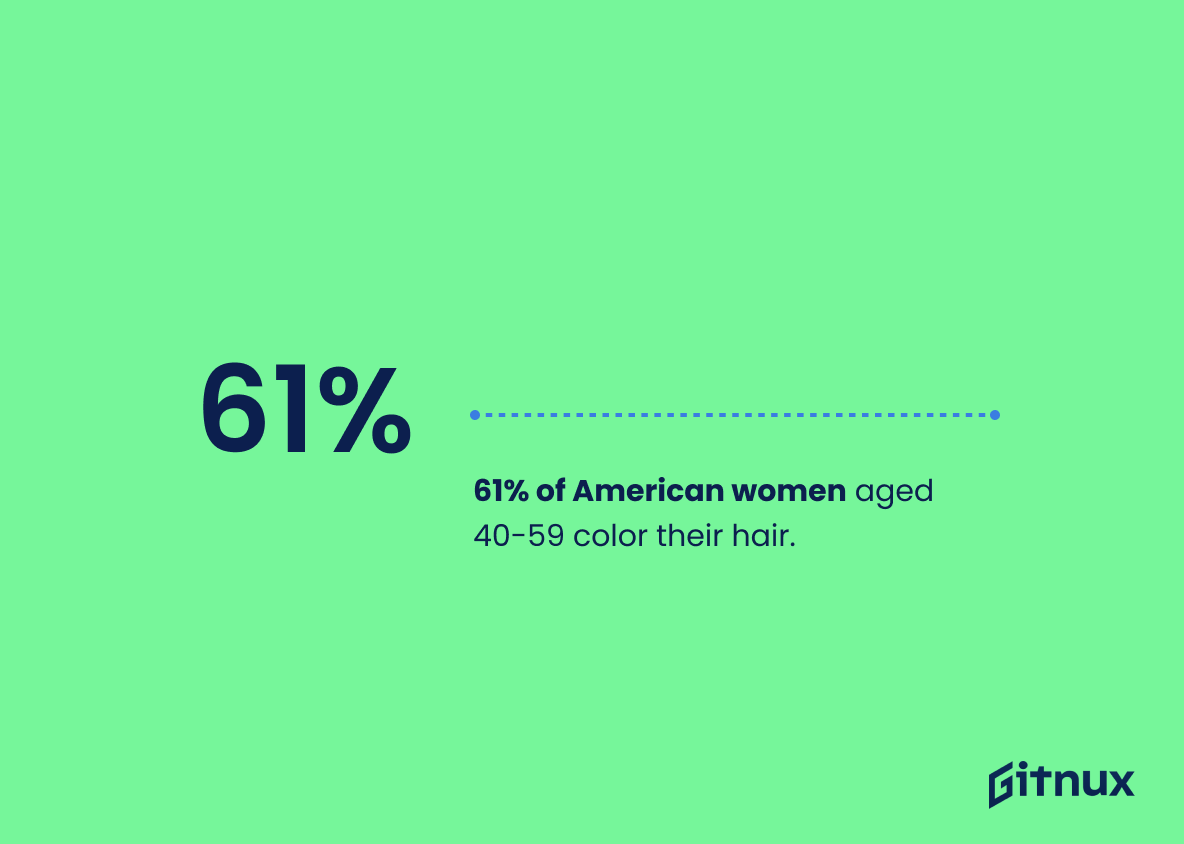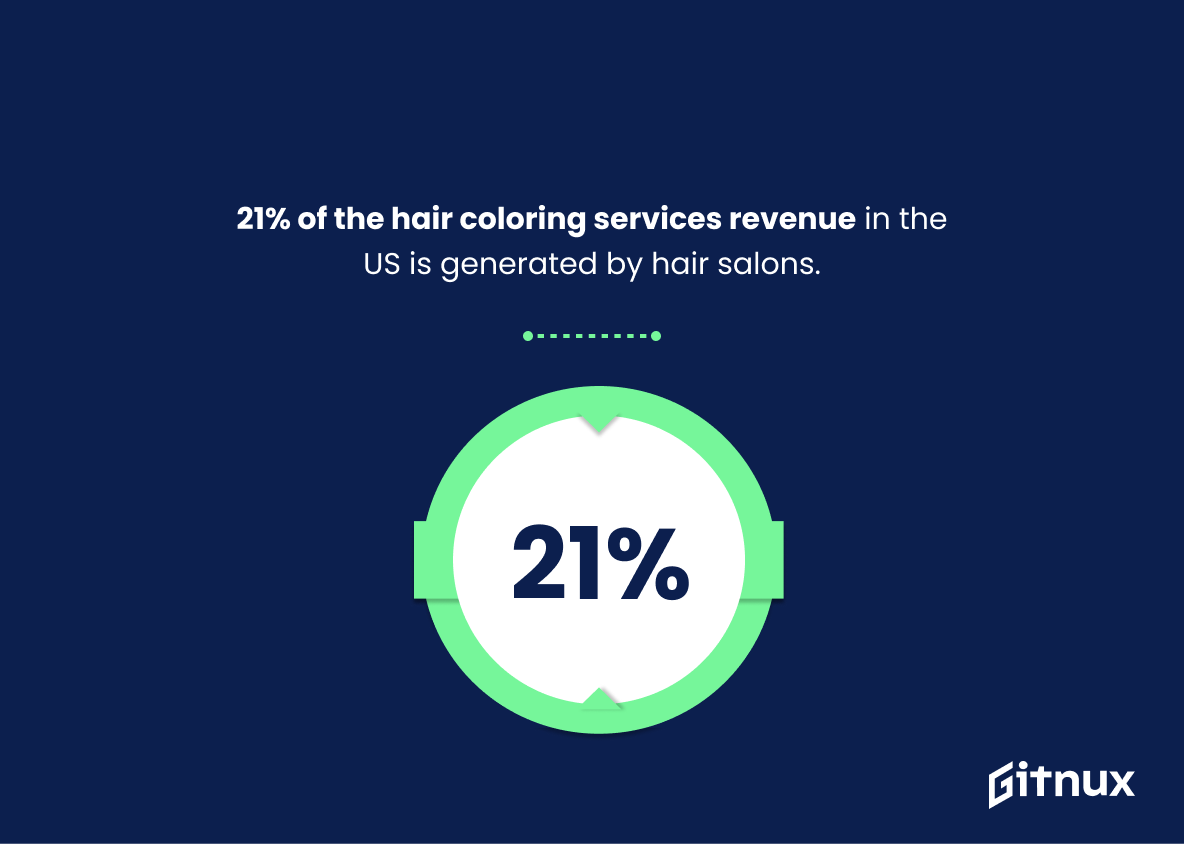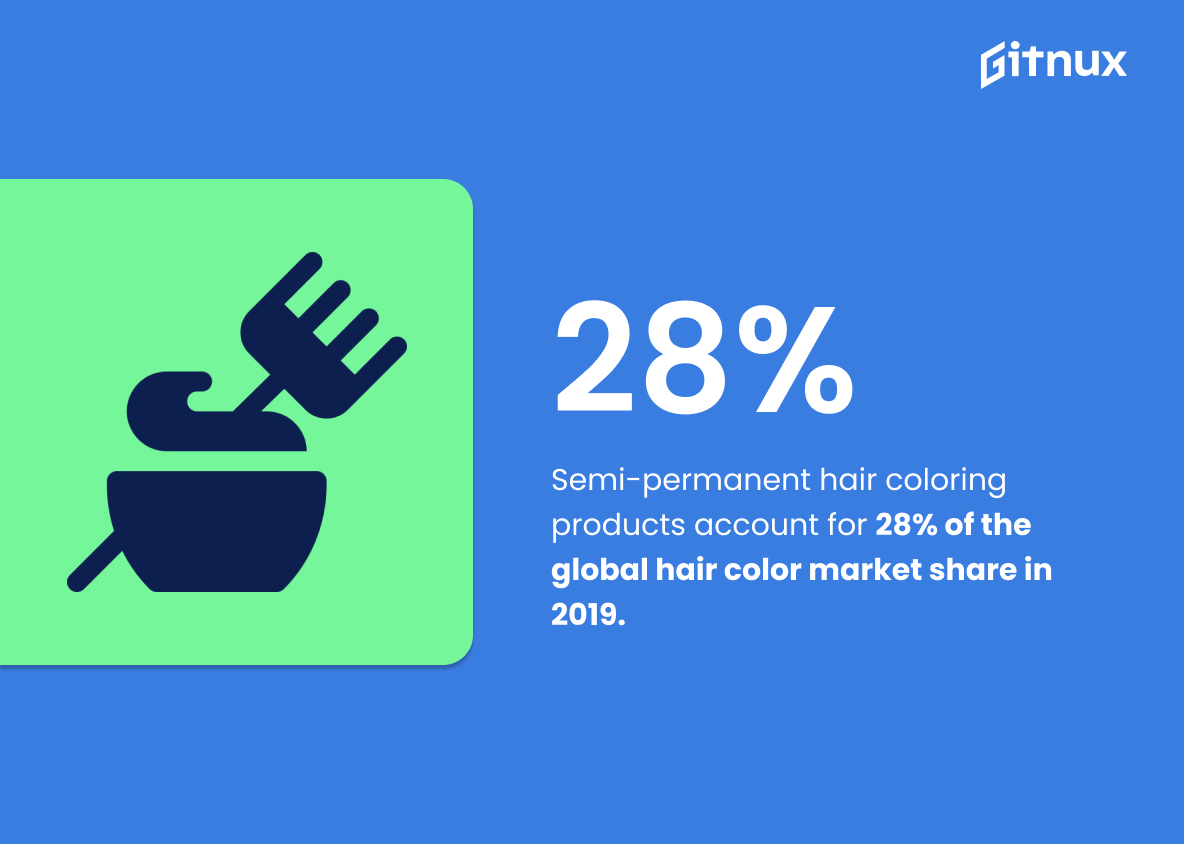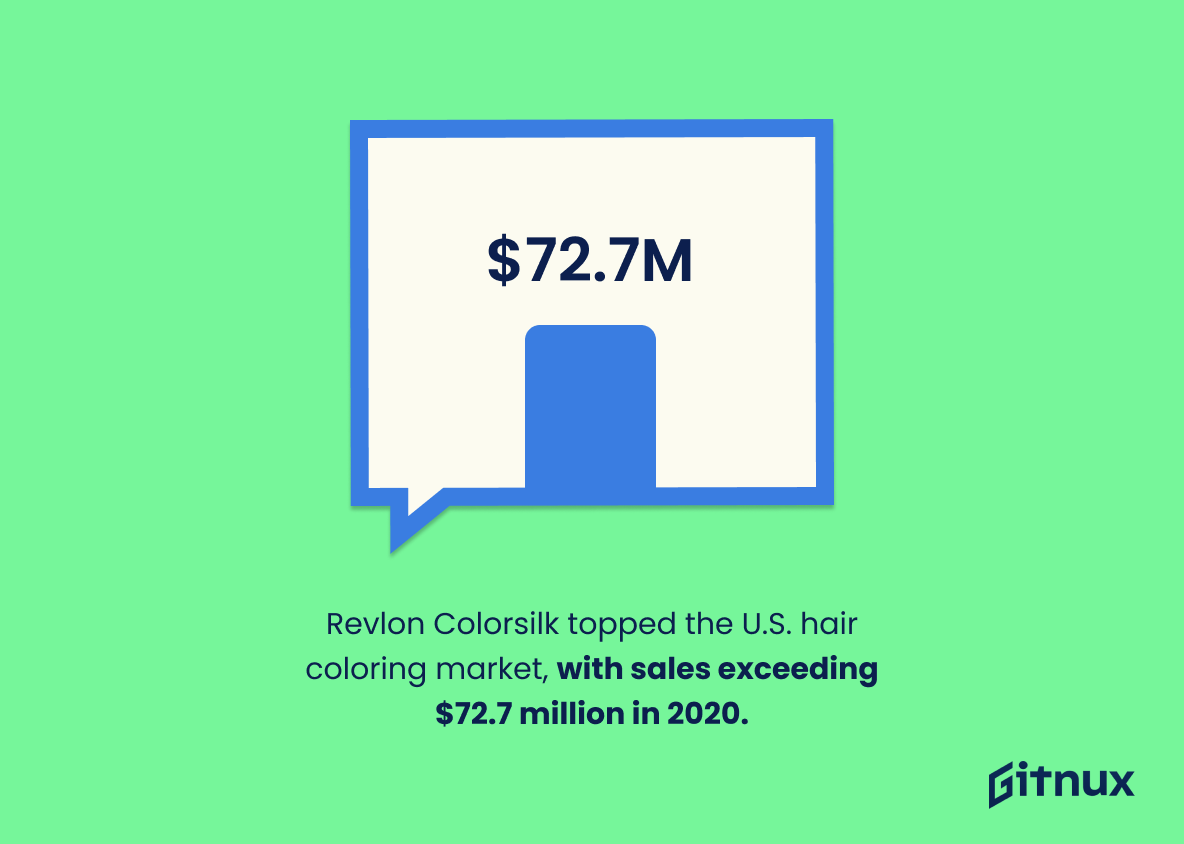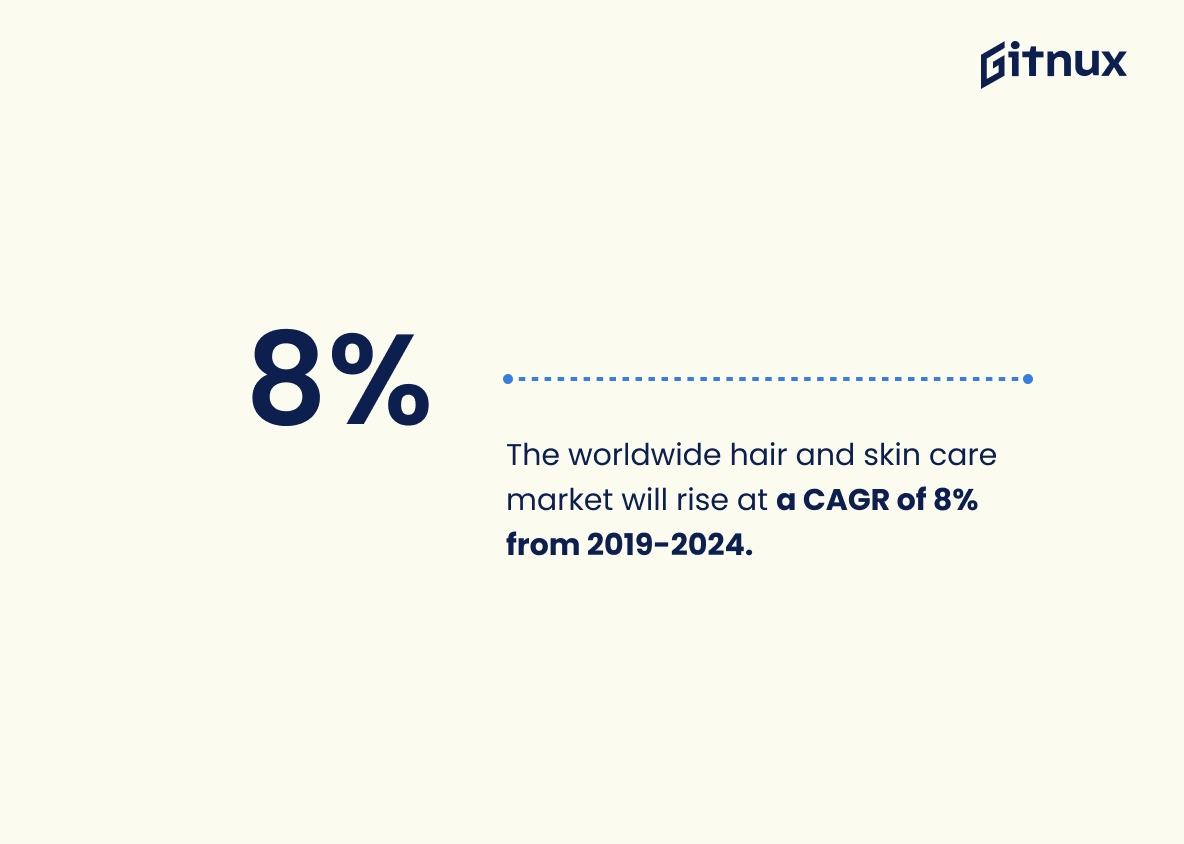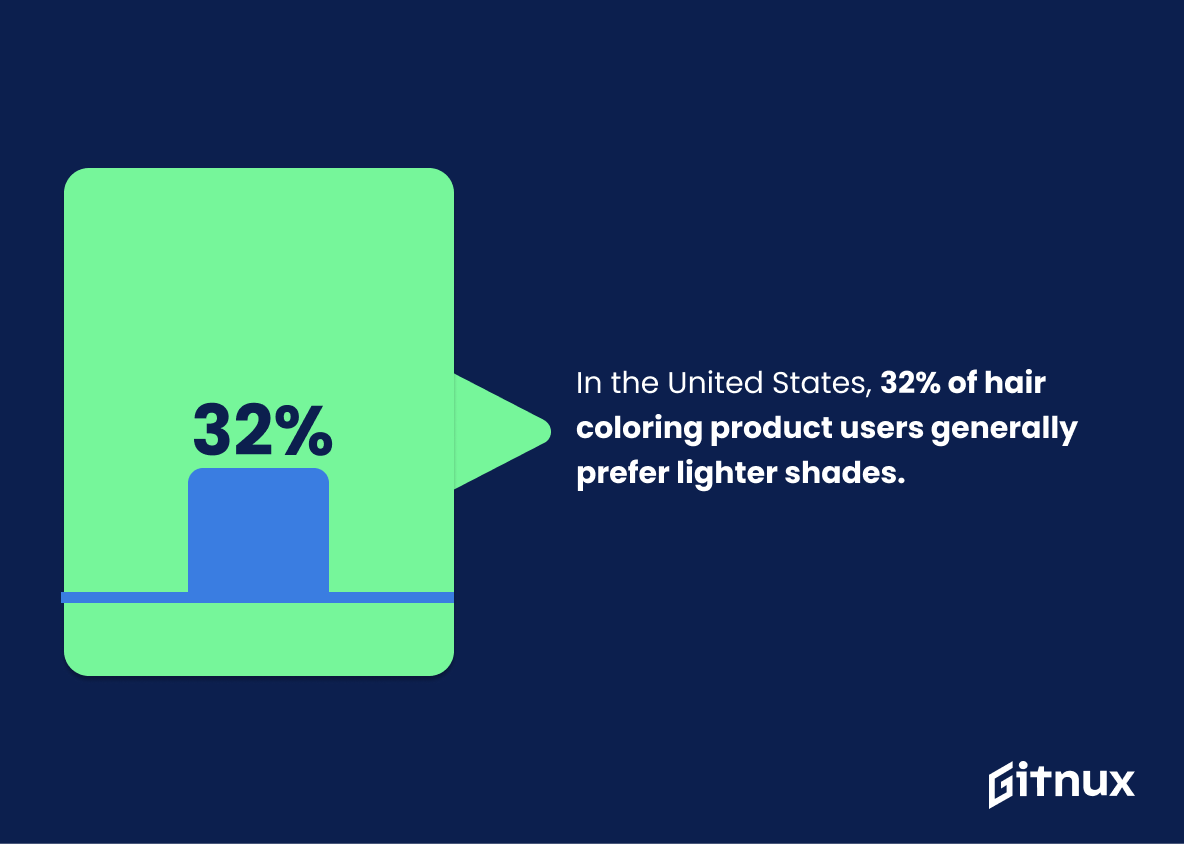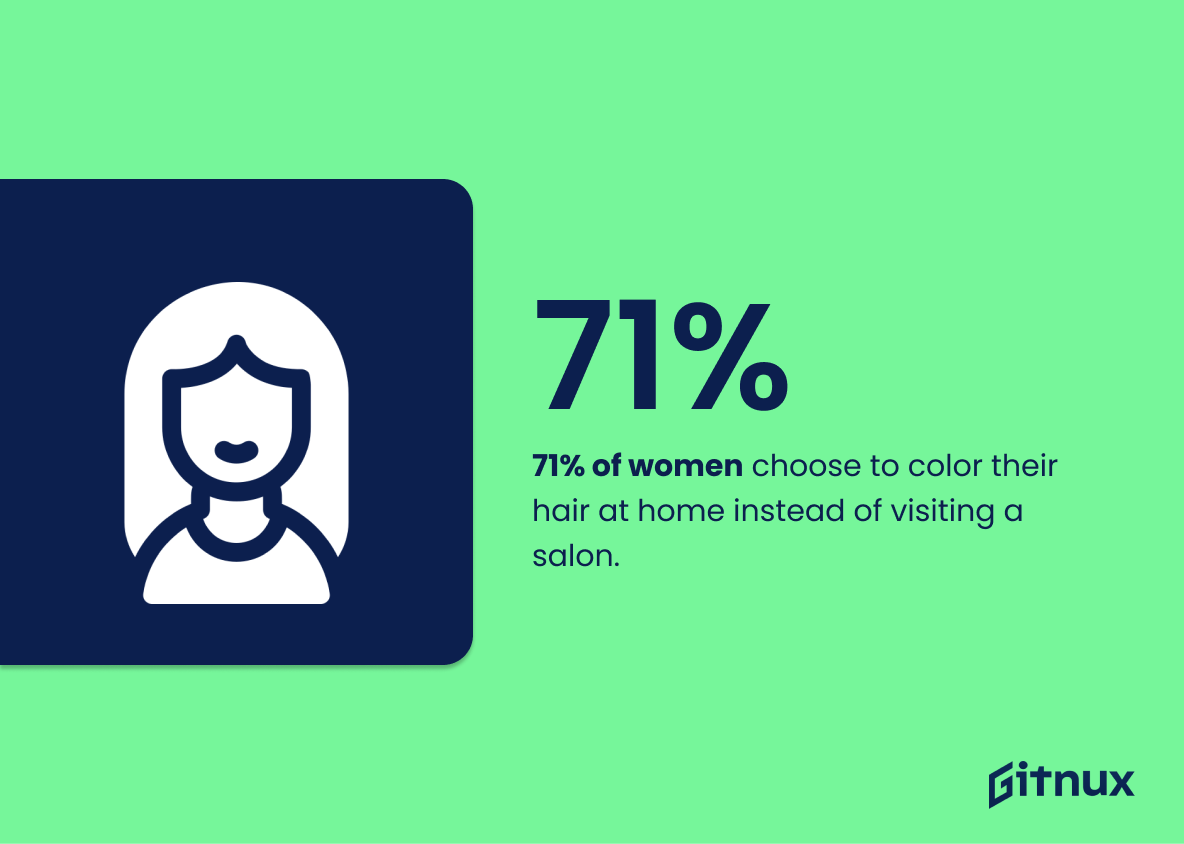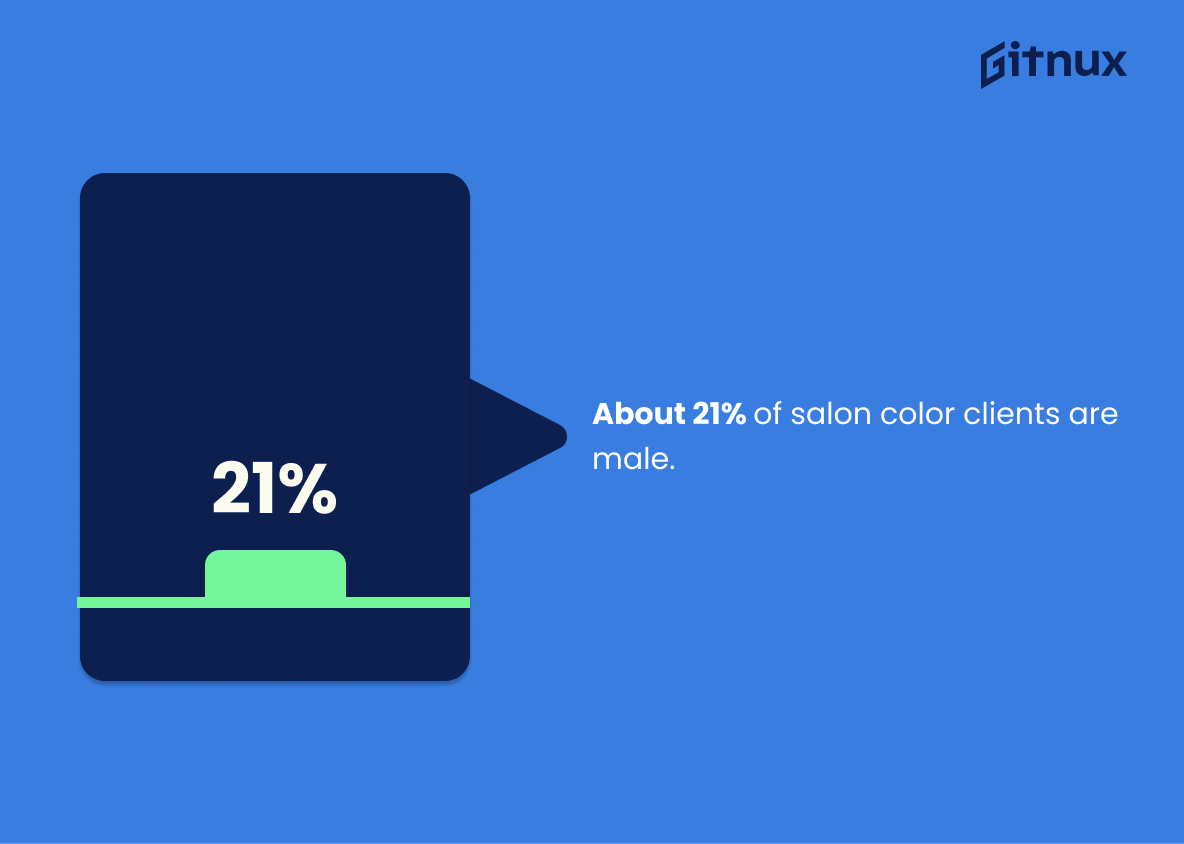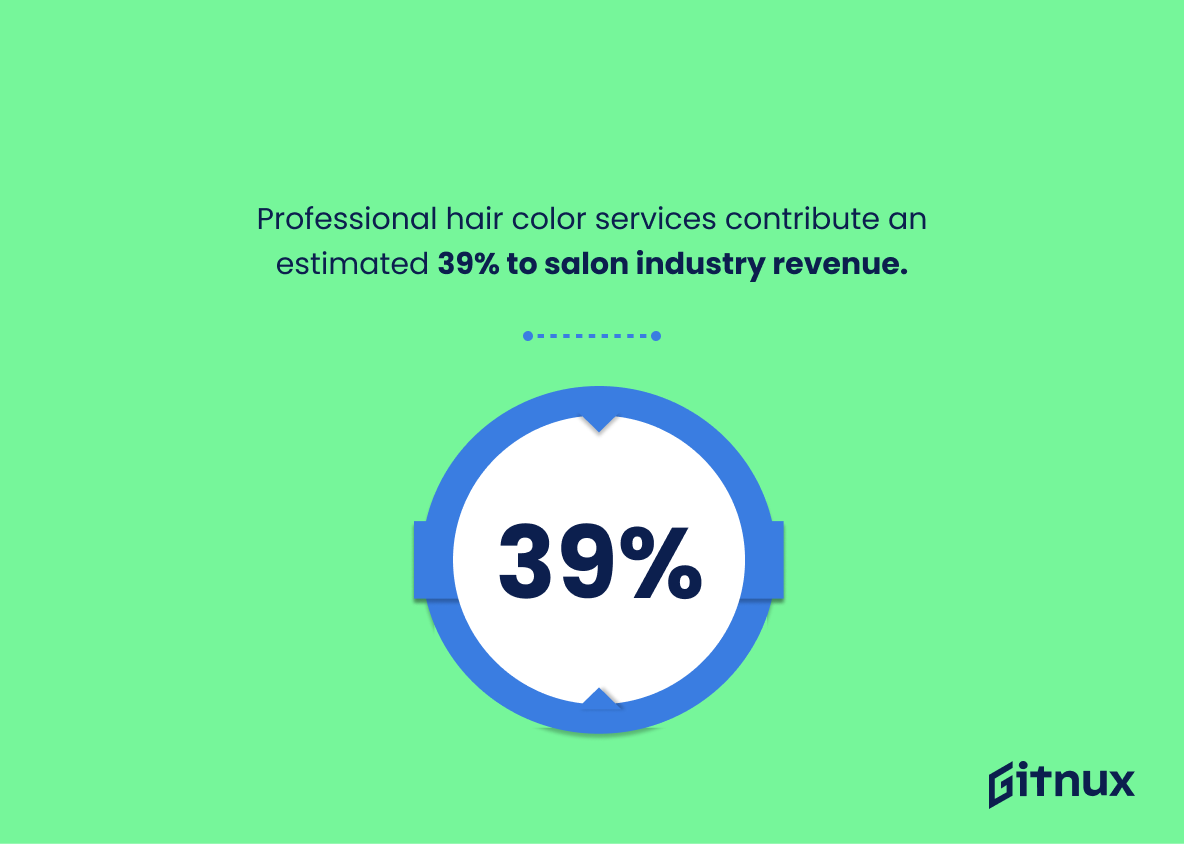Hair coloring has become an increasingly popular beauty trend in recent years, with more and more people opting to dye their hair for a variety of reasons. According to statistics from Statista, approximately 70% of women in the United States use hair coloring products. Hair colorings shipments amounted to 2.1 billion U.S dollars in 2020 alone, while the global market was valued at 23.7 billion U.S dollars in 2019 and is projected to reach 26.7 billion by 2025 according to Transparency Market Research estimates . Men’s hair coloring products are expected grow at a CAGR of 4.4%, 61% American women aged 40-59 color their hair, semi-permanent dyes account for 28% of the global market share and Revlon Colorsilk brand holds 72 million US dollar sales as top earner among other brands such as L’Oreal which holds 28%. Furthermore 10-20 % individuals who color their experience allergic reactions , 75 % cover grey hairs , 71 % prefer home services over salons & 50+ percent opt blonde shades respectively . The worldwide industry will rise 8 percent between 2019 – 2024 & professional services contribute 39 percent revenue whereas natural segment grows highest 8 point two percentage till 2025 . All these facts make it clear that this is one beauty trend that isn’t going away anytime soon.
This statistic is a powerful indicator of the prevalence of hair coloring products among women in the United States. It speaks to the fact that a large majority of women are actively engaging in the practice of hair coloring, making it a significant part of their beauty routine. This statistic is an important piece of information to consider when discussing the popularity of hair coloring products and the impact they have on the beauty industry.
Hair coloring product sales amounted to 2.1 billion U.S. dollars in 2020.
This statistic is a testament to the immense popularity of hair coloring products, demonstrating the sheer magnitude of the industry. It is a clear indication of the widespread use of hair coloring products, and the immense potential for growth in the sector. This statistic is a valuable insight into the current state of the hair coloring industry, and provides a useful benchmark for future growth.
Hair Coloring Statistics Overview
The global hair color market was valued at 23.7 billion U.S. dollars in 2019.
This statistic is a testament to the immense popularity of hair coloring, with the market value reaching an impressive 23.7 billion U.S. dollars in 2019. It is clear that hair coloring is a booming industry, and this statistic serves as a reminder of the importance of hair coloring in the lives of many people.
Men’s hair coloring products are expected to grow at a CAGR of 4.4% from 2020 to 2027.
This statistic is a testament to the increasing popularity of hair coloring products among men, indicating that the market for such products is expected to expand significantly over the next seven years. It is a valuable insight for anyone interested in the hair coloring industry, as it provides a glimpse into the potential growth of the sector.
61% of American women aged 40-59 color their hair.
This statistic is significant in the context of a blog post about Hair Coloring Statistics because it reveals the prevalence of hair coloring among American women in the 40-59 age range. It demonstrates that a majority of women in this age group are actively engaging in hair coloring, which is an important insight for anyone interested in the topic.
By 2025, the global hair color market is projected to reach 26.7 billion U.S. dollars.
This statistic is a testament to the immense potential of the hair color market. It shows that the industry is growing rapidly and is expected to reach a staggering 26.7 billion U.S. dollars by 2025. This is a clear indication that hair coloring is becoming increasingly popular and is a lucrative business opportunity for those looking to capitalize on the trend. This statistic is a valuable insight for anyone interested in the hair color market and provides a great starting point for further research.
21% of the hair coloring services revenue in the US is generated by hair salons.
This statistic is a telling indication of the importance of hair salons in the hair coloring services industry in the US. It highlights the fact that hair salons are a major contributor to the revenue generated by hair coloring services, and thus, are a key factor in the success of the industry. This statistic is essential to understanding the current state of the hair coloring services industry in the US and provides valuable insight into the potential opportunities and challenges that may arise in the future.
Semi-permanent hair coloring products account for 28% of the global hair color market share in 2019.
This statistic is a testament to the popularity of semi-permanent hair coloring products, highlighting their significant presence in the global hair color market. It is a clear indication that these products are widely used and sought after, making them an important factor to consider when discussing hair coloring statistics.
The Revlon Colorsilk brand is the top-earning brand in the U.S. hair coloring market, with over 72.7 million U.S. dollars in sales in 2020.
This statistic is a testament to the success of Revlon Colorsilk in the U.S. hair coloring market, demonstrating its dominance in the industry. It is a clear indication that the brand is a leader in the market, and its products are highly sought after by consumers. This statistic is an important piece of information for anyone interested in the hair coloring industry, as it provides insight into the current market trends and the success of Revlon Colorsilk.
The worldwide hair and skin care market will rise at a CAGR of 8% from 2019-2024.
This statistic is a crucial piece of information for anyone interested in the hair coloring industry, as it provides insight into the potential growth of the market. It indicates that the hair and skin care market is expected to experience a steady increase over the next five years, which could mean more opportunities for hair coloring businesses to expand and thrive. Additionally, this statistic could be used to inform decisions about the types of products and services to offer, as well as the potential for new markets to explore.
In the United States, 32% of hair coloring product users generally prefer lighter shades.
This statistic is significant in the context of a blog post about Hair Coloring Statistics as it provides insight into the preferences of hair coloring product users. It indicates that a large portion of users prefer lighter shades, which could be useful information for hair coloring product manufacturers and retailers. Additionally, it could be used to inform marketing strategies and product development.
75% of women who color their hair do so to cover grey hair.
This statistic is a powerful indicator of the motivations behind hair coloring, as it reveals that the majority of women who color their hair are doing so to conceal grey hair. This information is essential for a blog post about Hair Coloring Statistics, as it provides insight into the primary reasons why women choose to color their hair.
71% of women choose to color their hair at home instead of visiting a salon.
This statistic is significant in the context of a blog post about Hair Coloring Statistics because it reveals the preference of women when it comes to coloring their hair. It shows that the majority of women prefer to color their hair at home, rather than visiting a salon. This information can be used to inform readers about the cost-effectiveness of coloring their hair at home, as well as the potential risks associated with it.
L’Oreal holds the largest market share in the hair color industry with 28.6%.
This statistic is significant in the context of a blog post about Hair Coloring Statistics because it demonstrates the immense influence that L’Oreal has in the hair color industry. With a market share of 28.6%, it is clear that L’Oreal is the leading brand in the industry and has a strong presence in the market.
Over 50% of women who color their hair opt for blonde shades.
This statistic is significant in the context of a blog post about Hair Coloring Statistics because it reveals a clear trend among women who color their hair: a preference for blonde shades. This information can be used to inform decisions about which hair colors to stock in salons, which shades to feature in advertisements, and which colors to recommend to customers.
About 21% of salon color clients are male.
This statistic is significant in the context of a blog post about Hair Coloring Statistics because it demonstrates that hair coloring is no longer a service exclusively used by women. It shows that men are increasingly embracing hair coloring as a way to express themselves and enhance their look. This statistic is a testament to the growing trend of men experimenting with hair color and highlights the importance of salons offering hair coloring services to both men and women.
Professional hair color services contribute an estimated 39% to salon industry revenue.
This statistic is a powerful indicator of the importance of professional hair color services to the salon industry. It demonstrates that hair coloring services are a major source of revenue for salons, and that they should be taken seriously as a business opportunity. This statistic is especially relevant to a blog post about hair coloring statistics, as it provides a concrete example of the financial impact of hair coloring services.
Conclusion
The statistics presented in this blog post demonstrate the prevalence of hair coloring products and services among both men and women. Approximately 70% of women in the United States use hair coloring products, with sales amounting to 2.1 billion U.S. dollars in 2020 alone. The global hair color market was valued at 23.7 billion U.S dollars in 2019, while it is projected to reach 26.7 billion by 2025 due to an expected CAGR growth rate of 8%. Men’s hair coloring products are also growing rapidly, with a CAGR estimated at 4-4%, while 61% of American women aged 40-59 color their hair as well as 75% who do so for covering grey hairs or graying roots . Semi-permanent colors account for 28 %of the global share ,while Revlon Colorsilk brand holds 72 million US dollar sale revenue from 2020 onwards . Furthermore ,the average woman spends 29 USD on monthly basis on these product whereas 21 percent salon clients are male customers contributing 39 percent towards industry revenue through professional services . Finally 50 percent opt blonde shades out all other natural colours which will grow highest cagr 8:2 till 2025 respectively
References
0. – https://www.stylecaster.com
1. – https://www.mordorintelligence.com
2. – https://www.marketwatch.com
3. – https://www.modernsalon.com
4. – https://www.statista.com
5. – https://www.ibisworld.com
6. – https://www.globenewswire.com
7. – https://www.probeauty.org
8. – https://www.transparencymarketresearch.com
9. – https://www.grandviewresearch.com
10. – https://www.bustle.com
11. – https://www.cosmopolitan.com
